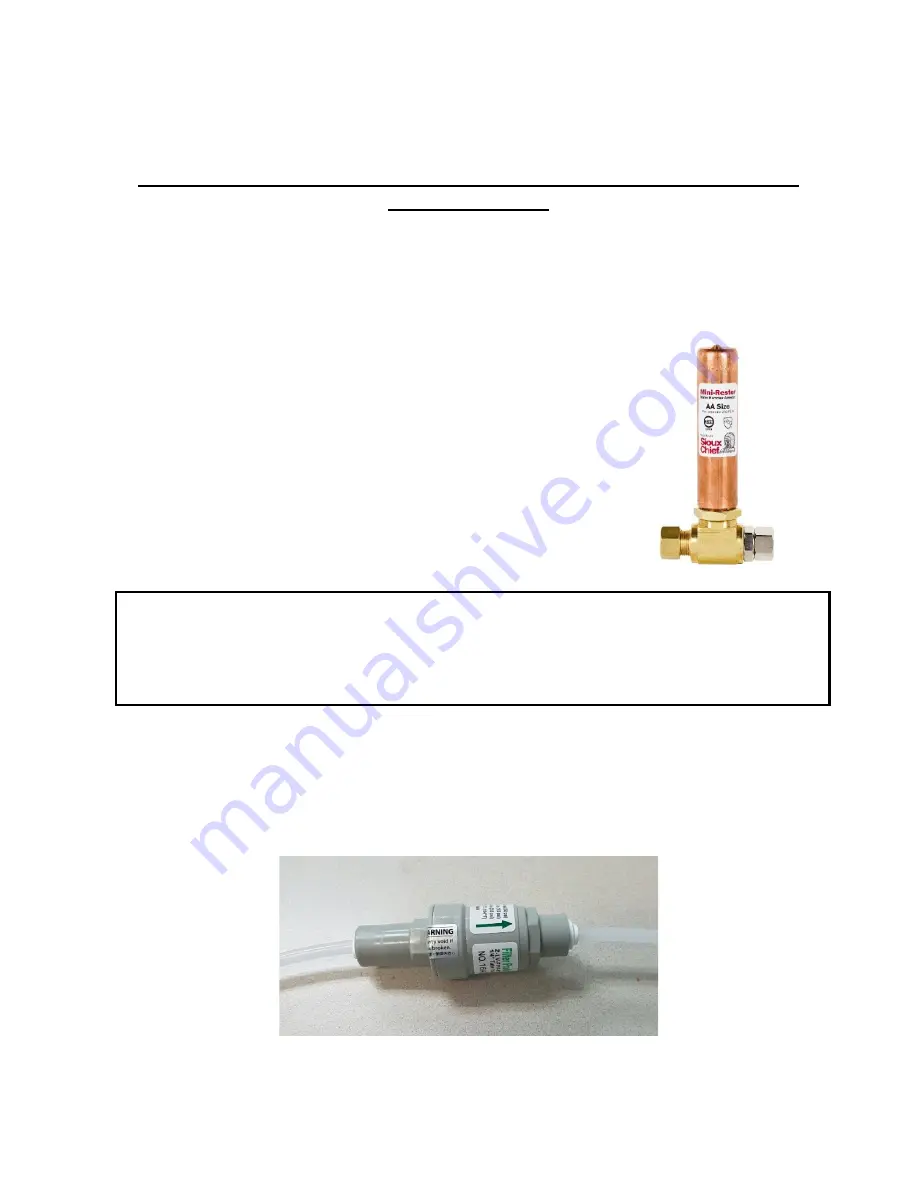
12
ADDENDUM 1
INSTALLATION INSTRUCTIONS FOR WATERITE P/N
REGP1414E PRESSURE
REDUCING VALVE
Residential drinking water RO systems are designed to operate at normal household water
pressure levels, about 50 to 65 PSI. While systems and components are factory tested to
125 PSI, this is to only check for leaks and component integrity. On occasion, some
household line pressures may exceed this normal range and range up to100 PSI. Constant
high pressures exposure may, over time, weaken critical components and lead to leaks or
component failure. Similarly, many households have fast-
acting valves in such places as washing machines,
dishwashers or other appliances. This may cause sudden
hydraulic shock or water hammer conditions throughout the
plumbing system (pipes ‘banging’) that could cause
components or tube to break or rupture.
A well-designed plumbing system usually incorporates shock
arrestors (see figure 1) to soften the effects of water hammer.
Also, most areas where high line pressure exists will require
every home to be equipped with a pressure reducing valve that
lowers the household pressure to a normal range. However,
some household plumbing may not have such safeguards.
Figure 1.
As additional protection for the RO from over-pressure and water hammer, your kit has been
equipped with a combination water pressure reducer and water hammer arresting device,
Waterite p/n REGP1414E. This device is installed on the cold water inlet tube that feeds
the RO system. See figure 2.
Figure 1
Figure 2
!
It is highly recommended that residential RO system installations be made only
in homes where line pressures are at a maximum of 65 PSI and water hammer
arrestors are present.
















